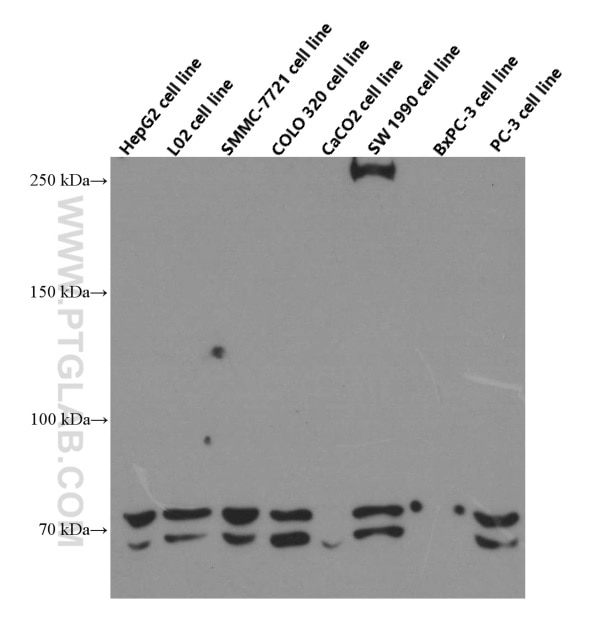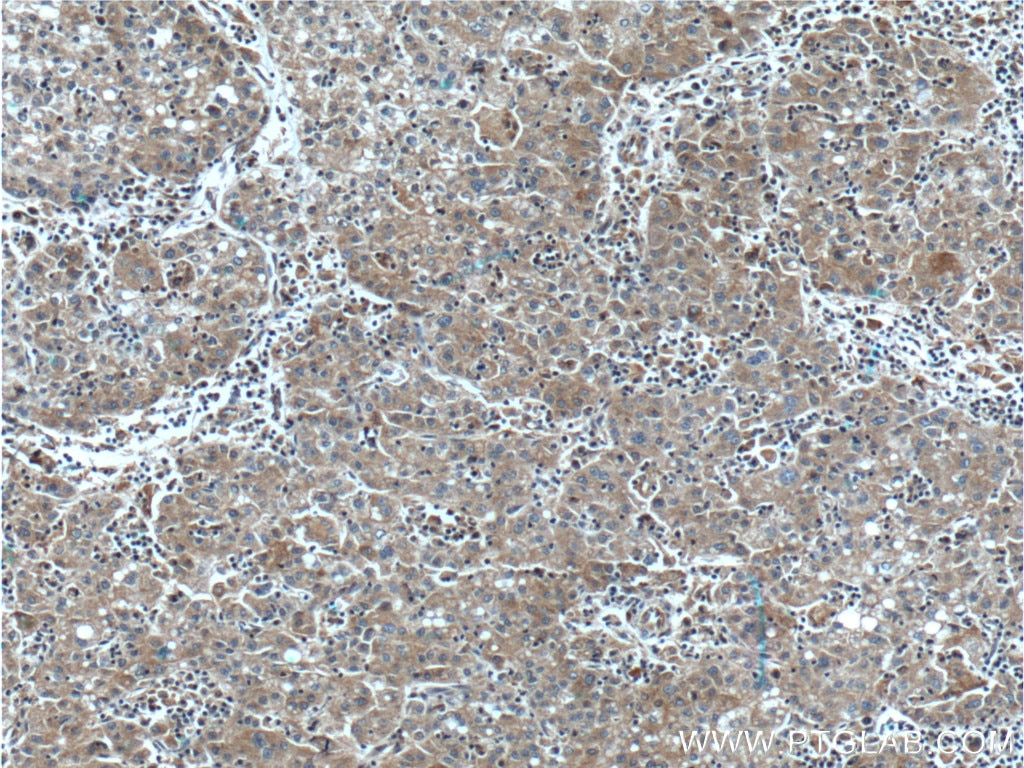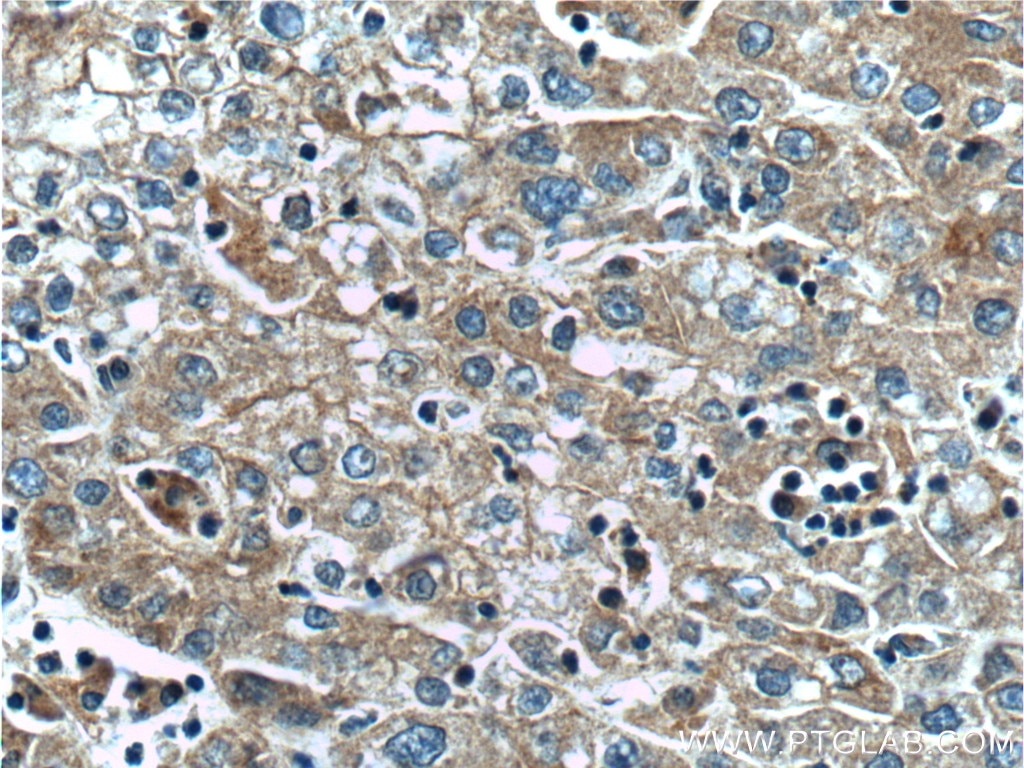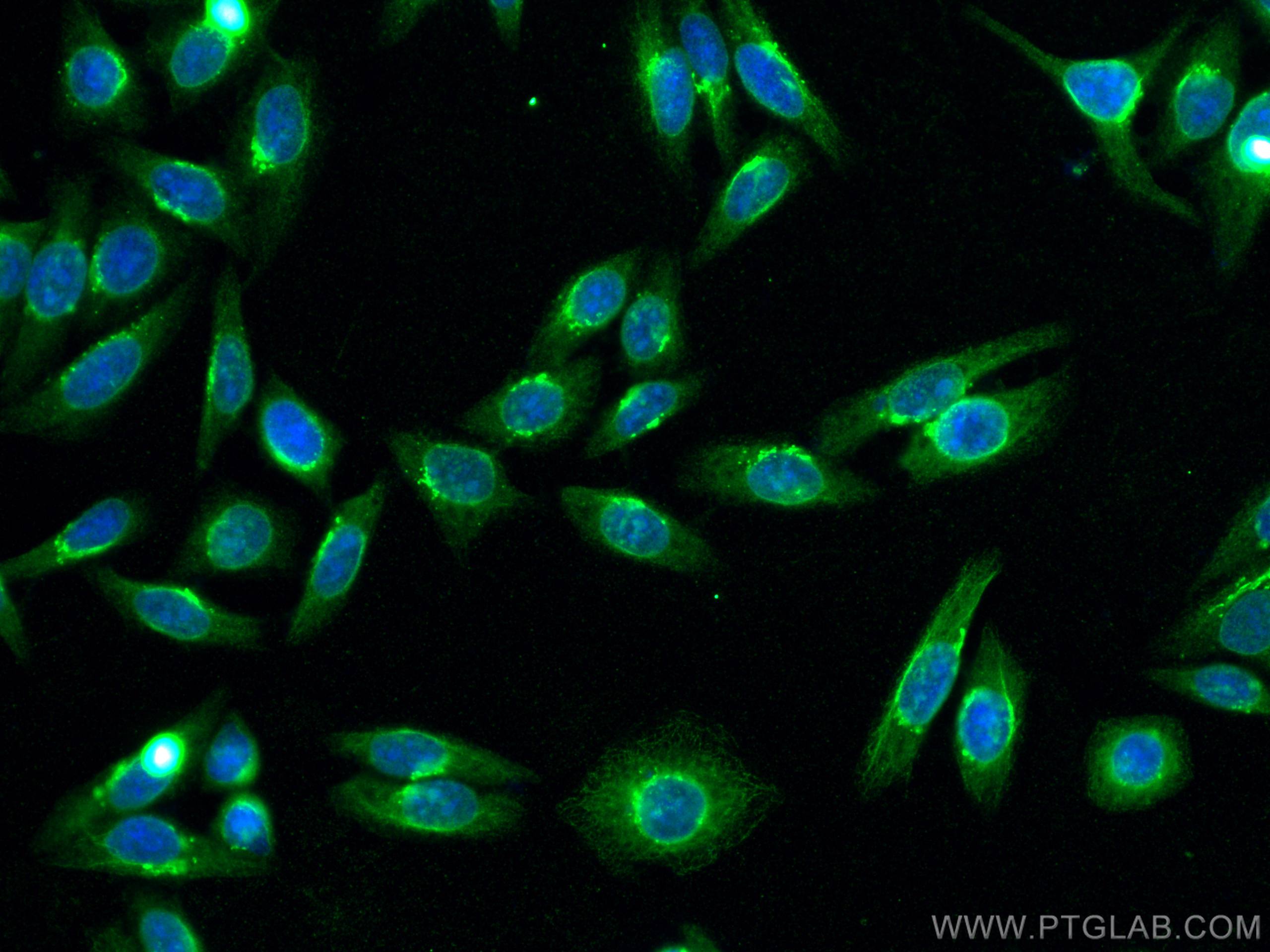Validation Data Gallery
Tested Applications
Recommended dilution
| Application | Dilution |
|---|---|
| It is recommended that this reagent should be titrated in each testing system to obtain optimal results. | |
Product Information
66381-1-PBS targets SLCO1B3/OATP1B3 in WB, IHC, IF/ICC, Indirect ELISA applications and shows reactivity with human samples.
| Tested Reactivity | human |
| Host / Isotype | Mouse / IgG1 |
| Class | Monoclonal |
| Type | Antibody |
| Immunogen | SLCO1B3/OATP1B3 fusion protein Ag19033 相同性解析による交差性が予測される生物種 |
| Full Name | solute carrier organic anion transporter family, member 1B3 |
| Calculated molecular weight | 702 aa, 77 kDa |
| Observed molecular weight | 68-77 kDa |
| GenBank accession number | BC105597 |
| Gene Symbol | SLCO1B3 |
| Gene ID (NCBI) | 28234 |
| RRID | AB_2881757 |
| Conjugate | Unconjugated |
| Form | Liquid |
| Purification Method | Protein G purification |
| UNIPROT ID | Q9NPD5 |
| Storage Buffer | PBS only{{ptg:BufferTemp}}7.3 |
| Storage Conditions | Store at -80°C. |
Background Information
SLCO1B3, also known as OATP8 or OATP1B3, is a member of Organic Anion Transporting Polypeptides (OATPs) which are sodium-independent organic anion transporters mediating the uptake of a wide range of structurally diverse endogenous and exogenous compounds including bile acids, hormone conjugates, peptides, toxins, as well as a multitude of therapeutic drugs. SLCO1B3 is specifically expressed in liver under normal condition, while its expression has also been observed in cancer tissues like colon, prostate and pancreas. It corresponds to Oatp1b2 in mice, with the gene symbol Slco1b2. The mouse genome encodes only a single transporter gene in the OATP1B subfamily, because SLCO1B1 and SLCO1B3 arose in primates by gene duplication after divergence from rodents. The molecular mass of SLCO1B3 is highly dependent on the glycosylation modification (deglycosylated form of 65 kDa, fully-glycosylated form of 120 kDa).



